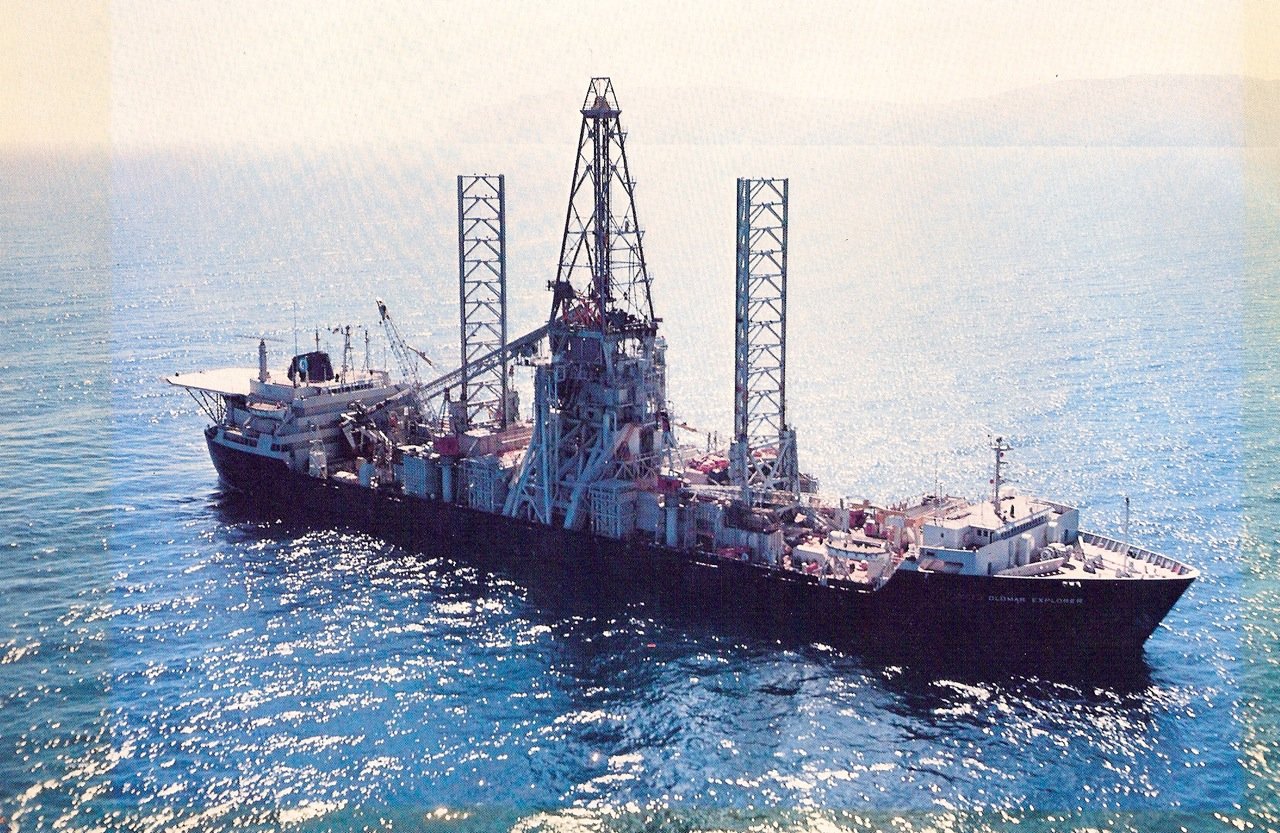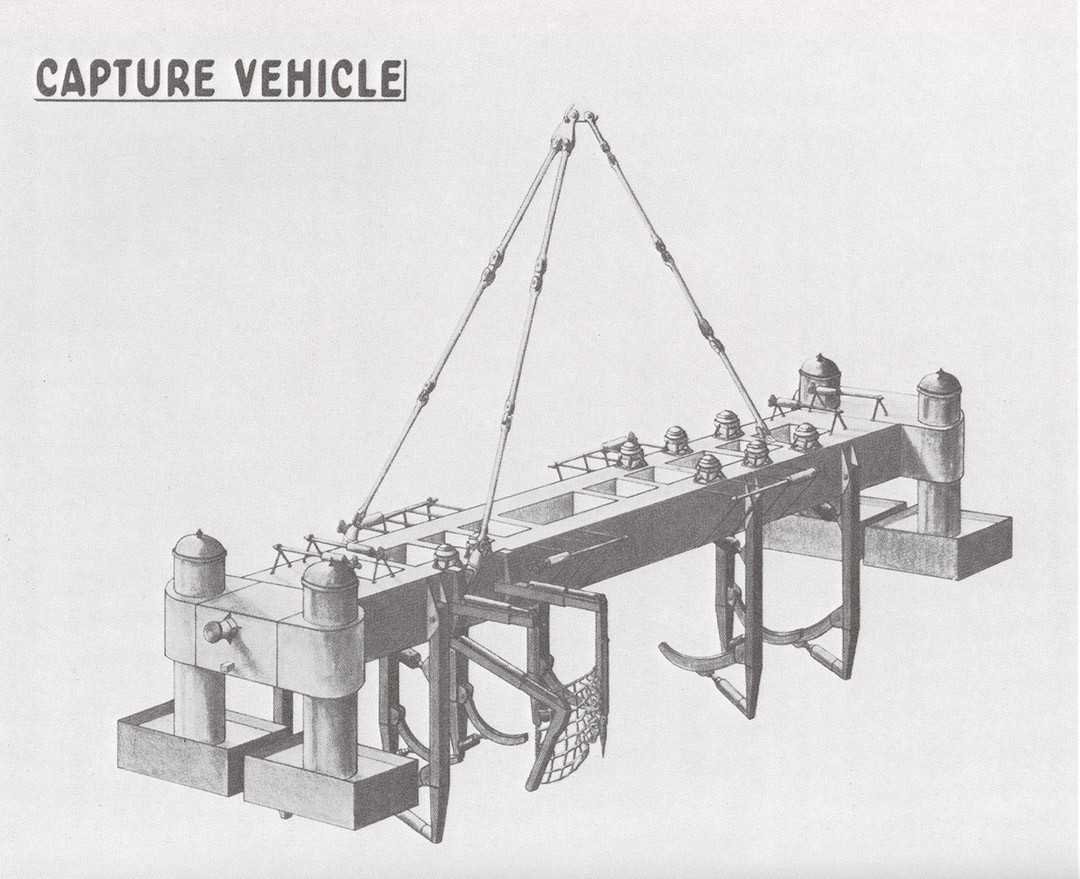How Billionaire Aviator Howard Hughes Helped the CIA Steal a Soviet Submarine

With help from reclusive billionaire Howard Hughes, the CIA secretly salvaged a sunken Soviet submarine in September 1974. Composite by Coffee or Die Magazine.
Lying 3 miles deep on the seafloor of the Pacific Ocean, Soviet submarine K-129 and its 98-man crew rested forever, or so the Russians believed. When the K-129 disappeared approximately 1,500 miles northwest of Hawaii in March 1968, the technology to recover the submarine did not exist — until the CIA caught wind of the sunken intelligence treasure trove purportedly inside.
Rumors of American naval action swirled in the heated atmosphere of the Cold War, but what actually caused the sub to sink remains a mystery. After searching desperately for the submarine for two months, the Soviets abandoned their operation to recover the K-129, which carried nuclear weapons and codebooks and possessed a complex design and technology that the CIA wanted to get a look at. The CIA found the submarine a short time later using hydrophone triangulation and the USS Halibut.
With help from the Department of Defense, the agency launched Project Azorian, a super-secret operation led by CIA special projects director John Parangosky to pull the submarine from a depth of 16,500 feet. The joint task force’s ambitious plan involved a fake mining research ship, an eccentric billionaire, a daring burglary, and the possibility of international piracy charges against the US.

With help from the reclusive billionaire Howard Hughes, the CIA built a 618-foot ship named the Hughes Glomar Explorer, which was passed off as a commercial deep-sea mining vessel ostensibly built and owned by Hughes. According to the CIA’s website, “Hughes provided the necessary cover, asserting that the Glomar Explorer and its crew were conducting marine research at extreme ocean depths and mining manganese nodules lying on the sea bottom.”
Christened with champagne at the Long Beach, California, docks in 1972, the Hughes Glomar Explorer spent two years testing its equipment before heading for the remote patch of the Pacific Ocean to steal a ballistic submarine.
The task force scrapped an early idea of using a gas bubble to float the K-129 to the surface, opting instead to extract it with a mechanical arm that resembled the claw from an arcade prize machine. The Hughes Glomar Explorer’s mechanical arm, code-named “Clementine,” sustained a catastrophic failure during recovery and lost a large part of the submarine during the lift to the surface. According to NPR, the agency only recovered about 40 feet of the 300-foot vessel. Unable to retrieve the entirety of the submarine, the CIA still recovered data on K-129’s construction and obtained nuclear missiles from the derelict.
The CIA also collected six Russian sailors. While aboard the Hughes Glomar Explorer on Sept. 4, 1974, the CIA performed a formal military burial at sea for the recovered Soviet mariners and filmed it for later release to the Russian government. Director of Central Intelligence Robert Gates later gave the footage to Russian President Boris Yeltsin in 1992.
While the Hughes Glomar Explorer crew sorted through the intelligence and planned a follow-on excursion to recover the rest of the submarine, a Hollywood burglary jeopardized the operation’s secrecy. Just after midnight on June 5, 1974, assailants bound and gagged a security guard in Howard Hughes’ Summa Corp. office in Los Angeles. They ransacked the safes and file cabinets, stealing approximately $60,000 and several papers.
The burglars soon realized the files were worth more than their score and attempted to blackmail the Hughes organization for $1 million. In exchange, the burglars promised silence regarding Hughes’ connection to the CIA and Project Azorian, according to The New York Times. Hughes refused to pay them, believing the burglars would continue to extort him for more money even after their initial demands were met.

Investigative journalist Jack Anderson broke the story, and several outlets followed with reports on Project Azorian. The CIA negotiated with several media outlets to hold the story, citing possible diplomatic ramifications with the Soviet Union. Anderson saw Azorian as a waste of taxpayer money if the government claimed “no intelligence value,” and he felt compelled to publish. Under Congressional investigation for massive governmental overreach, the scandal broke at a tenuous time for the CIA and FBI, with national trust in the agencies at an all-time low.
As the media splashed headlines with information on Project Azorian — much of which remains classified — the CIA publicly commented on the media’s allegations with a phrase now famous for its nonanswer: “We neither confirm nor deny.” The phrase admits no wrongdoing or fault, holds up in federal court, and provides diplomatic cover.
Known as the “Glomar Response,” it allowed the Ford administration to walk a “diplomatic tightrope” with Russian relations, according to Smithsonian Magazine. The CIA continues to use the phrase to respond to FOIA requests, media comments, and press releases, even using it as its first tweet in 2014.
Read Next:

Lauren Coontz is a former staff writer for Coffee or Die Magazine. Beaches are preferred, but Lauren calls the Rocky Mountains of Utah home. You can usually find her in an art museum, at an archaeology site, or checking out local nightlife like drag shows and cocktail bars (gin is key). A student of history, Lauren is an Army veteran who worked all over the world and loves to travel to see the old stuff the history books only give a sentence to. She likes medium roast coffee and sometimes, like a sinner, adds sweet cream to it.
BRCC and Bad Moon Print Press team up for an exclusive, limited-edition T-shirt design!
BRCC partners with Team Room Design for an exclusive T-shirt release!
Thirty Seconds Out has partnered with BRCC for an exclusive shirt design invoking the God of Winter.
Lucas O'Hara of Grizzly Forge has teamed up with BRCC for a badass, exclusive Shirt Club T-shirt design featuring his most popular knife and tiomahawk.
Coffee or Die sits down with one of the graphic designers behind Black Rifle Coffee's signature look and vibe.
Biden will award the Medal of Honor to a Vietnam War Army helicopter pilot who risked his life to save a reconnaissance team from almost certain death.
Ever wonder how much Jack Mandaville would f*ck sh*t up if he went back in time? The American Revolution didn't even see him coming.
A nearly 200-year-old West Point time capsule that at first appeared to yield little more than dust contains hidden treasure, the US Military Academy said.












